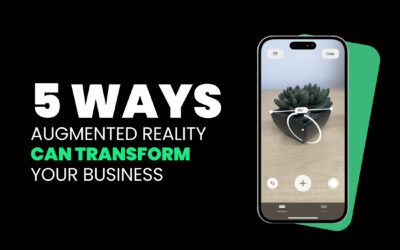A lot of times, we tend to view augmented reality as a thing of the future. So much so, that we risk forgetting how it can help paint an incredibly immersive picture and experience of the past. Whether history classes, tourism, or any other reason for reliving some of the greatest or most influential moments in history — augmented reality can make it possible. We’re lucky to be able to feature this 3-part guest blog, from Mike Malone of Reckonation Blog!

I was recently inspired by Tomi Ahonen’s presentation on Augmented Reality that I came across on YouTube.
I thought he made some salient points on AR – how it is the 8th Mass Media and how it may affect our lives in the next 5 to 10 years. It inspired me to start thinking of some of the potential applications of this new and emerging technology and this is one of those ideas.
This will be the first of a 3 part series riffing on AR where I will also explore some ideas on how to monetize it.
Augmenting History
Want to walk the same path John Wilkes Booth did as he ascended to the Presidential Box in Ford’s theater? Or how about stand in the same spot that Abraham Zapruder did on November 22, 1963?
It seems to me we could leverage the emerging AR technology to really make for richer and more immersive tourist interactions at places of historical significance and, to a lesser degree, locations of general interest.
When a user visits a landmark they would have the option of loading a data-set related to the history associated with that area. These data-sets would include the major players that are historically linked to the event or place, how they got there, the paths they walked etc. – as well as plenty of drill-down info to make for a rich, immersive AR experience.
It would take alot of data to prime the pump and get something like this up and running. ALOT of data. So, in order to help achieve a critical mass, in terms of data entry, the paradigm would be broken into two data tiers; Open Source and Premium. The open source data-sets would be contributed by the public and policed and organized by a peer rating system (think yelp/Wikipedia) while the Premium data-sets would be constructed by historians or other professionals and vetted.
Creating the open source data-sets could involve some sort of web-based or mobile client that allows users to enter GPS coordinates and/or even draw paths on the terrain – the way some of these jogging and running sites do.
The User Experience

The user would visit a landmark or historical area and use their mobile device to view the additional historical data. They would also have the ability to load the data-set they desired and filter different data depending on what they wanted to see on their screen.

It is plausible that there may be hundreds of data-sets for the more popular tourist attractions and users will have the ability to sort through what is available based on a data-set’s rating or they may opt for the higher quality, more comprehensive premium data-set.





